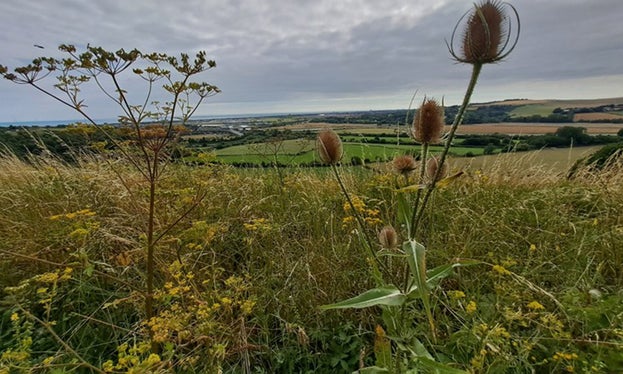November 2025
To Exist Here: From Collections to Connections – by Pauline Rutter
To exist here and now in this space, this embodied nature writing, environmental care and community nourishing space; to call in others to walk the paths across the South Downs; to turn out of yourself what is there on the inside of your heart, for those who look like you; to offer a fossil’s history or pressed herbarium chalk grassland story for them to plant in their rolling landscapes of imagination, is to live in the fullness of being.
Read the full blog here



































